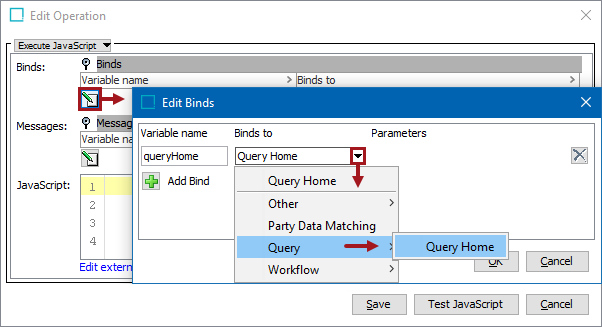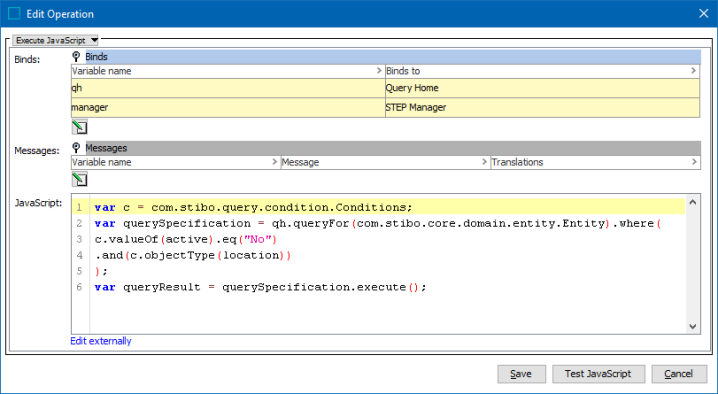Business rules can use the Query Home to bind to a variable, while static methods on the conditions interface must be accessed as illustrated below.
The bind can be found within the 'Binds to' dropdown as shown below.

Configuration
To use any bind:
-
Create a business rule as defined in the Creating a Business Rule, Function, or Library topic.
-
Edit the business rule as defined in the Editing a Business Rule or Function topic.
-
In the Edit Operation dialog, add the bind to a business rule, as defined in the Adding a Bind topic.
-
In the Edit Operation dialog, optionally add Messages, as defined in the Localized Messages for JavaScript Business Rules topic.
-
In the Edit Operation dialog, add JavaScript to call the bind.
Example
The following is an example JavaScript that uses this bind.
Important: Example scripts should not be used as-is without thorough testing, including updating the script to match object and link types that exist on your system. JavaScript variable names are case-sensitive.

A query that matches entities of object type 'location' with the value 'No' for attribute 'active' could be formulated as follows, where 'Query Home' is bound to variable 'qh' and 'STEP Manager' is bound to 'manager'.
var c = com.stibo.query.condition.Conditions;
var querySpecification = qh.queryFor(com.stibo.core.domain.entity.Entity).where(
c.valueOf(active).eq("No")
.and(c.objectType(location))
);
var queryResult = querySpecification.execute();